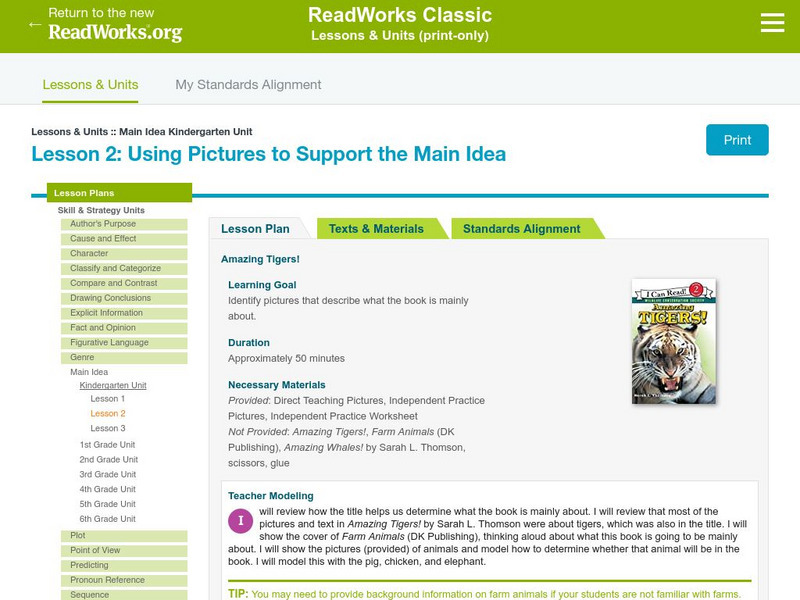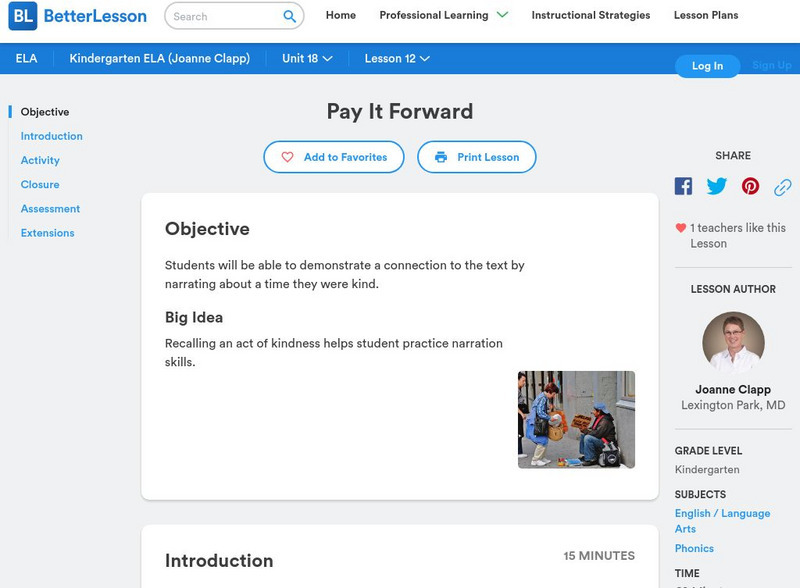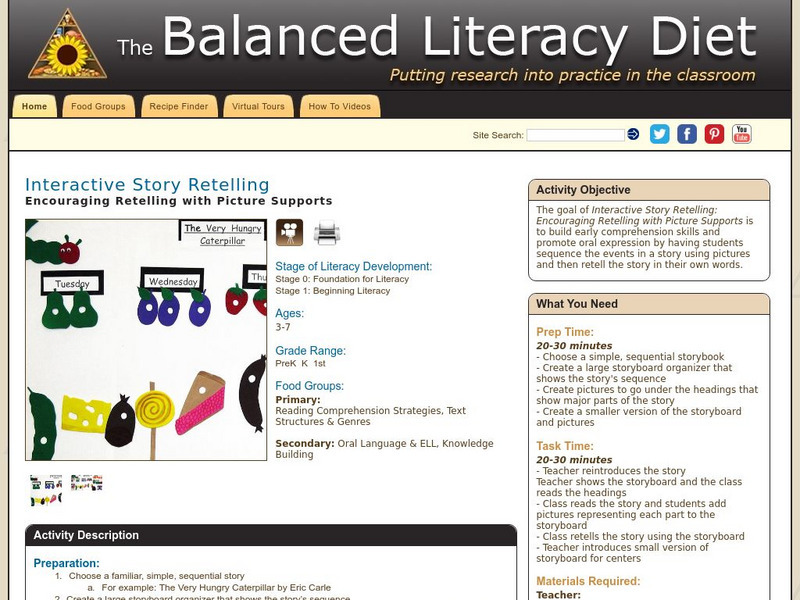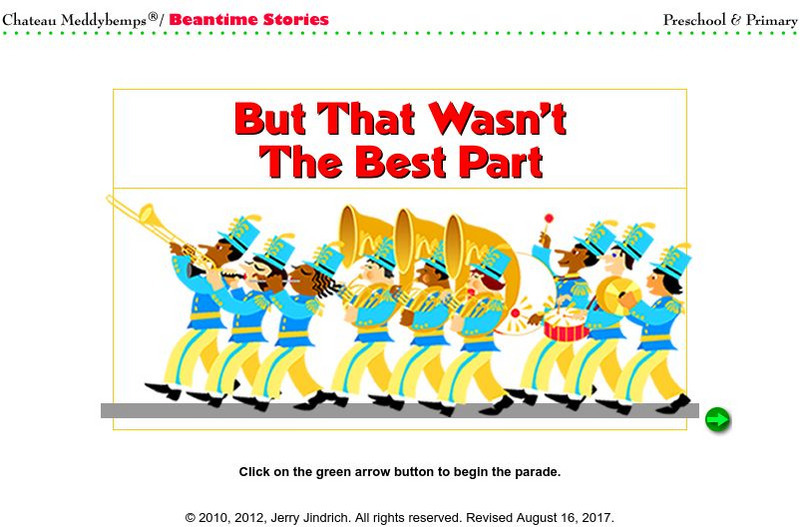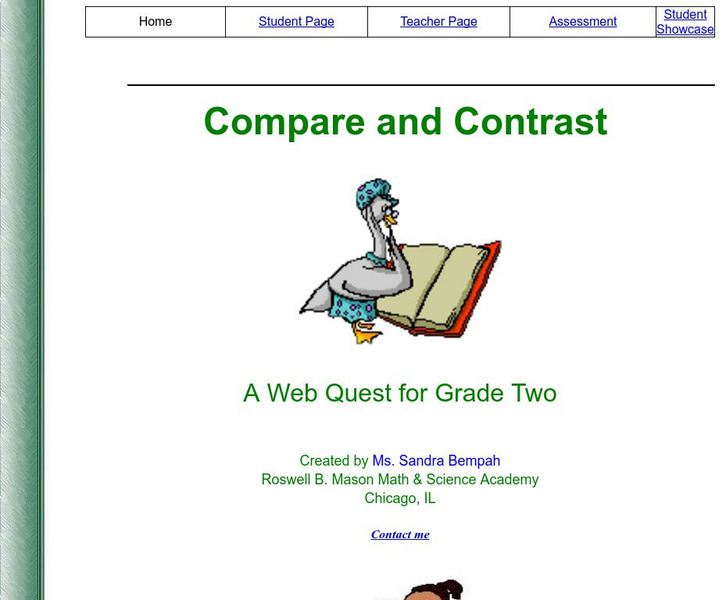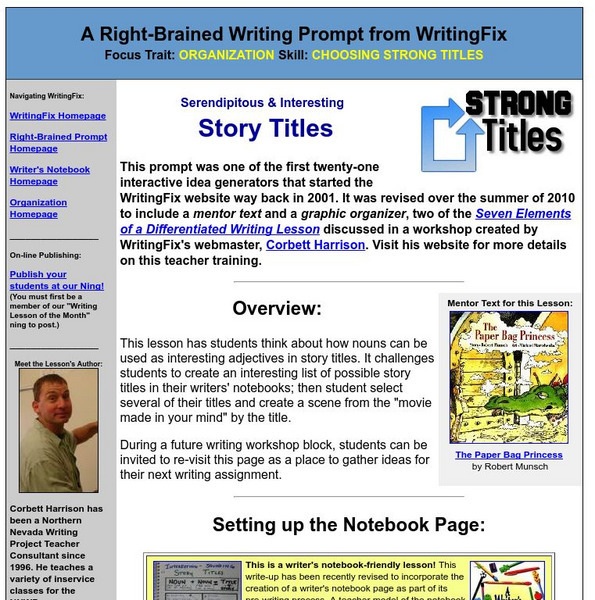Annenberg Foundation
Annenberg Learner: Interactives: Elements of a Story
Explore the elements of a story using the well-known Cinderella story as source material. Learn about setting, character, sequence, exposition, conflict, climax, and resolution.
Utah Education Network
Uen: Kindergarten Writing Lesson #2/Descriptive Prompt
This lesson plan provides a descriptive writing prompt for kindergarten students about a single event or about several events. Students will use a combination of dictating, drawing, and writing to narrate their stories.
Utah Education Network
Uen: K Act. 08: Language Arts Writing Experience
Teachers will model sentences about their favorite foods. Students will mimic these sentences about their own favorite foods and will illustrate pictures of them. All pages will be assembled into a class book.
Better Lesson
Better Lesson: Who Writes the Story? Who Does the Illustrations?
Students will learn to identify the author and illustrator on the cover of the book and orally define their role. Pictures and video of the instructional activity in action are included.
Read Works
Read Works: Lesson 2: Using Pictures to Support the Main Idea
[Free Registration/Login Required] Students will peruse the pictures of an informational text to predict the topic of the book.
Better Lesson
Better Lesson: Go, Dog, Go!
Students will read the story and describe the picture details of the illustrations in relation to the text and write about one of the story events. "Go, Dog, Go!" contains illustrations that are very elaborate and crazy while the text is...
Better Lesson
Better Lesson: Picture Walk and Partner Talk
Students will participate in a picture walk through the expository text "Seasons and Weather". The purpose of the picture walk is to prepare the students for reading the story and gives them practice in using picture clues to make...
Better Lesson
Better Lesson: Pictures and Text Work Together Too!
The class will read the informational text "Together They Were Better". As the teacher reads the book aloud, she/he will use the illustrations from each page to give students clues as to the text on the page, helping them to see the...
Better Lesson
Better Lesson: Emergent Readers With and Emergent Reader
Students will sequence story events with the teacher and read an emergent reader in a guided setting. The chosen book, "Pilgrims and Wampanoag: Together They Were Better", has high use of sight words and high levels of picture support...
Better Lesson
Better Lesson: Writing an Opinion in Response to the Story
Students need to have lots of opportunities to share their opinions based on text. In this instructional activity, the teacher will read the story, Jack and the Beanstalk, multiple times before the students create their opinion. The...
Better Lesson
Better Lesson: Describing a Memory
Students will be able to use a combination of drawing, dictating, or writing to narrate a single event and provide a reaction to what happened. This lesson centers around the book "The Song and Dance Man", a great Grandparents Day activity!
Better Lesson
Better Lesson: Where Did You Learn That?
As adults, we explore pictures, captions, diagrams and text, when reading any kind of informational piece. Kids can do this too! In this instructional activity, learners will sort information that was obtained from pictures and diagrams,...
CPALMS
Cpalms: What Do You Do With a Tail Like This?
[Free Registration/Login Required] In this instructional activity, students will use What Do You Do With A Tail Like This? by Steve Jenkins and Robin Page to identify the main topic and key details using the illustrations and text....
Read Works
Read Works: Lesson 1: Actions
In this resource, students will practice identifying and describing the actions of a character. Teachers will model these skills through the use of text and pictures from the story No, David! by David Shannon. Students will then draw a...
Better Lesson
Better Lesson: Examining Point of View
Who is telling the story? Students analyze whose eyes the reader is looking through. Students will learn that there is more to point of view than knowing who is telling the story. This lesson will teach them about the nuances of the...
CPALMS
Cpalms: Wild About Authors and Illustrators
[Free Registration/Login Required] In this lesson, students learn about the roles of authors and illustrators through games and book-writing. Students will have an opportunity to act out the roles of illustrators and authors. They will...
Better Lesson
Better Lesson: Pay It Forward
Recalling an act of kindness helps students practice narration skills. The teacher will read "Because Brian Hugged His Mother" and discuss the idea of "paying it forward" as a class. Then students will write and draw about a time when...
The Balanced Literacy Diet
The Balanced Literacy Diet: Interactive Story Retelling
The goal of Interactive Story Retelling: Encouraging Retelling with Picture Supports is to build early comprehension skills and promote oral expression by having students sequence the events in a story using pictures and then retell the...
Chateau Meddybemps
But That Wasn't the Best Part
Learn about the Banana Festival in this fun online story. Great illustrations and the story is easy for younger children to navigate.
Michigan State University
Michigan State University: Intervention for Reading: Group Story Mapping
This intervention, which is based on Schema Theory, emphasizes linking previous knowledge structures (schemata) with reading materials. A pre-reading technique (see "My Story Map") provides a framework that directs students' attention to...
Curated OER
Mc Graw Hill: Part 1: Reading Literature: Use Illustrations and Details
Learn how drawing characters, settings, and events can help with reading comprehension.
Other
Castle Technology: Compare and Contrast: A Web Quest for Grade Two
This activity for young readers includes step-by-step teacher directions, student directions, resources, and rubrics. Students read or listen to two or more versions of a fairy tale and then work in groups to update the fairy tale to a...
Writing Fix
Writing Fix: Serendipitous & Interesting Story Titles
In this lesson plan, The Paper Bag Princess, a book written by Robert Munsch, is used as a mentor text. Young scholars will reflect on how nouns can sometimes be used as interesting adjectives. Students will collect these ideas in their...
Writing Fix
Writing Fix: Who/what/when/where: Desert Theme
For this lesson, Brooke Bessesen's picture book, Look Who Lives in the Desert!: Bouncing and Pouncing, Hiding and Gliding, Sleeping and Creeping, is used as the mentor text for its use of adverbial phrases. After several exposures to the...






